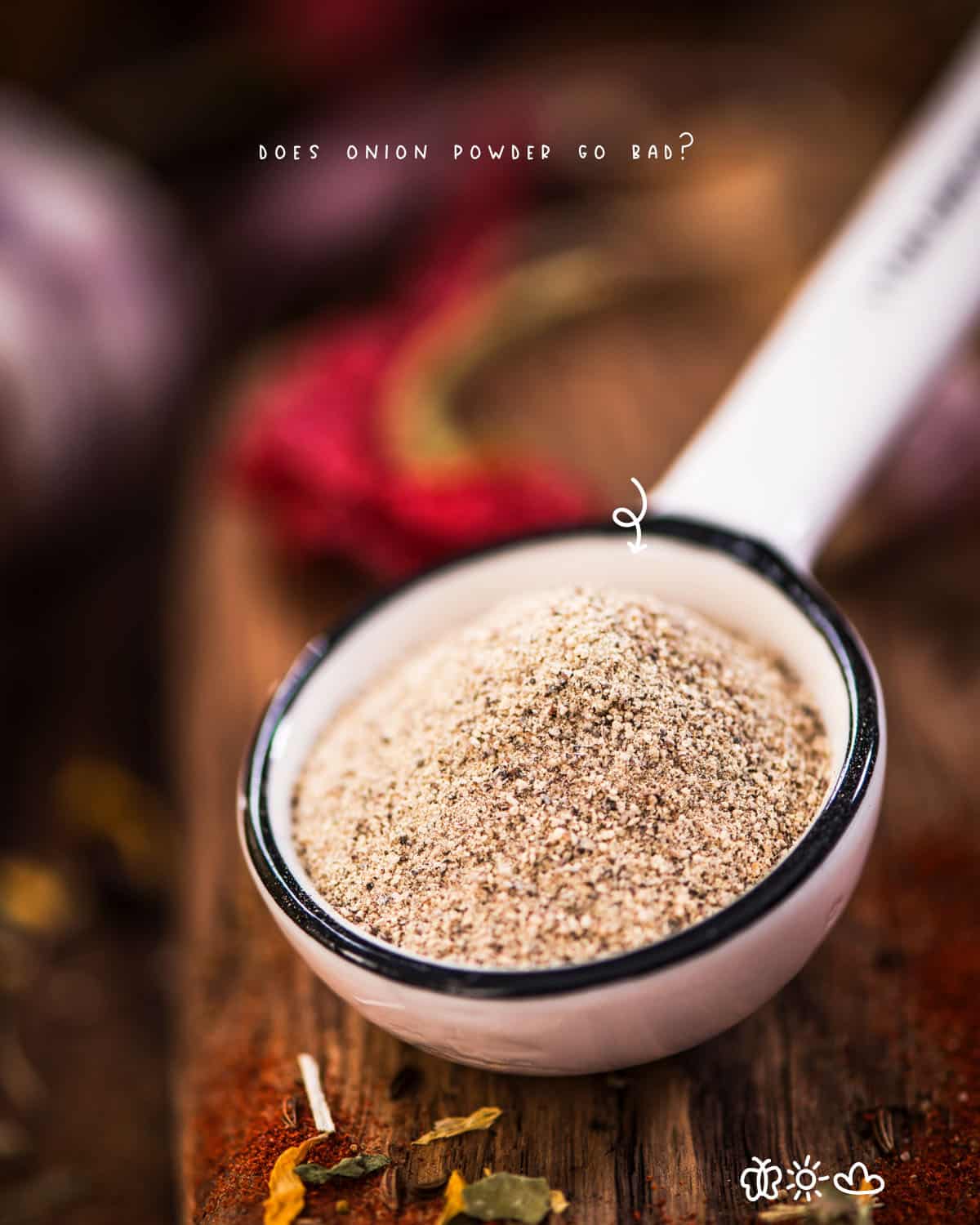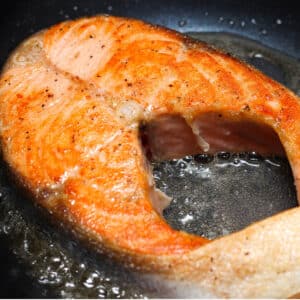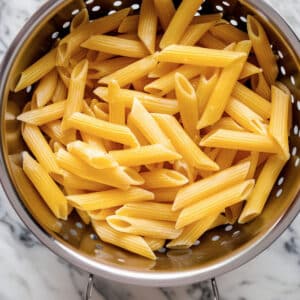Onion powder is a dried, ground version of onions. It's often used as a seasoning in place of fresh onions because it lasts longer and has a more intense flavor. It has a slightly sweet and savory flavor and can be used in many dishes. But does onion powder go bad? And how long does it last? How do you store it so that it stays fresh? In this article, we'll explore the shelf life of onion powder and find out how to tell if it's gone bad.
Does onion powder go bad? As with any food, onion powder eventually goes bad, despite its long shelf life. When stored properly in a cool, dark place, onion powder can last up to 2 years. Because onion powder is a dried food, it doesn't contain the water that can cause other foods to spoil.
Interesting Facts
Several scientific theories explain why chopping onions make people cry. An onion's sulfur compound complex is to blame. Despite the many stories about how to stop tears, it would probably take a full face mask for most of us to be able to do so. With 96 percent of the water removed, dehydrating onions is convenient, enhances flavor, and reduces the tears. That's great news!
What is onion powder?
Onion powder is a seasoning made from dried onions ground into powder. Adding it to food before or after it has been cooked is a common way of enhancing its flavor.
Onion powder has several uses:
- Use it to boost the flavor of soups, stews, and sauces to give them a boost of flavor.
- You can also use it as a dry rub on meats and vegetables.
- Additionally, you can use onion powder to make a variety of dips, such as onion dip or ranch dip.
For storage, dry, cool temperatures are best for onion powder. It will last for several months when stored properly. However, once opened, you should use onion powder within a few months for the best quality.

Read:
Does onion powder go bad?
Though onion powder technically could go bad, this is unlikely. In a cool, dark place, you can store the powder for several years if you put it in an airtight container. Powders will lose their flavor when they come into contact with air or light. An airtight container is essential to prevent the powder from becoming rancid and kept in a cool, dark place such as a pantry or cupboard. Thus, extending its shelf life.
If the powder clumps together, you can still use it, but the flavor will weaken. A musty odor indicates you should get rid of it.
How long does onion powder last?
Onion powder can last several years if stored properly in a cool, dark place. However, the powder's flavor will fade after a year or two. A store-bought onion powder can last as long as three to four years, but it will not taste as fresh.
Since onion powder is made from dried onions with high water content, it is vital to keep the powder in an airtight container to prevent it from absorbing moisture from the air. The ease with which onion powder can absorb moisture is why many recipes call for it to be "reconstituted" by adding a small amount of water before using it.
Despite its long shelf life, onion powder maintains a high level of freshness for a long time. In some cases, commercially dried powders can last up to four years. Homemade versions may not meet such high standards. The shelf life of onion powder varies, but in a well-sealed container, onion powder should remain flavorful for up to one year. With its ease and low cost, making a batch might be worthwhile twice a year.
How can you tell if onion powder is bad?
If onion powder has gone bad, it will have a dull color, and the flavor will be less intense. The powder may also have started to clump together. You should avoid using a powder that has off-odors, such as a musty smell if it has it.
So, below are a few things to look for when determining if your onion powder has gone bad. If you see any of these signs, it's best to err on the side of caution and throw it out. Better safe than sorry, right?
1 Look for signs of clumping.
If your onion powder has clumped together, don't worry. You can still use it. The flavor will just be a little less intense. Why? The powder has absorbed moisture from the air and started to form clumps. This is perfectly normal and doesn't mean the powder has gone bad.
If you want clumped powder, just break up the clumps with your fingers or a spoon before using.
2 Check for musty smells.
When onions (or any other food) start to go bad, they release a gas called sulfur dioxide. This gas is what gives things that telltale musty smell. If your onion powder has a musty smell, it's time to toss it.
When it comes to smelling musty, what do you expect? It's like a cross between sulfur and bleach and unpleasant. It's a sign that your onion powder is going bad and is no longer safe to eat.
3 Look for signs of mold.
Mold is another surefire sign that your onion powder has gone bad. Mold can be white, blue, green, black, or pink, usually fuzzy or slimy. If you see any mold on your onion powder, it's time to toss it. Why gets mold? Well, onion powder is a dried food, and mold needs moisture to grow. If there's even a little moisture in your onion powder (from humidity, for example), mold can start to grow. And once mold starts growing, there is no stopping it.
4 Taste it.
If the powder tastes faded or bland, it's time to replace it. Why is that? Because once the volatile oils that give onion powder its flavor have dissipated, it will never taste the same. Why not just add more onion powder to perk up the flavor? Because you'll just be adding more filler (usually starches) and not improving the flavor.
So if your onion powder tastes bad, it's time to get rid of it and start fresh with a new jar.
Can onion powder be frozen?
Yes, you can freeze onion powder for long-term storage. However, the quality of the powder may decline over time. When freezing onion powder, moisture can condense on the powder and cause it to clump.
Additionally, over time, the volatile compounds imparting flavor and aroma to onion powder may dissipate. For these reasons, it is best to use frozen onion powder within six months for the best flavor.
What is onion powder used for?
You can use onion powder in many different ways. You can add it to soups, stews, or casseroles for extra flavor.
1 If a recipe requires fresh onions, onion powder will do.
The process is simple! Over the top of the dish, sprinkle the onion powder and stir it to distribute it evenly. You can substitute fresh onions with onion powder in the same proportions.
2 Onion powder works well in soups and stews.
There is no better way to enjoy onion flavors and aroma than with pure onion powder, with a wide range of applications, from soups to stews, gumbos, and chowders to chili and beef stews.
3 A favorite seasoning for burgers, skillet suppers, meatloaf, chili, etc.
Topping a pound of ground beef with onion powder can be a good starting point, but don't be afraid to tweak it.
4 Onion powder is ideal for dry rubs.
Our recipe begins with onion powder, then adds cumin, parsley flakes, garlic powder, thyme leaves, and cayenne spice for pork ribs. Soak up the delicious flavor of the ribs for 60 minutes before roasting or grilling them.
What goes well
- The flavor of onion powder makes potato dishes more flavorful. Add it to sour cream to make baked potatoes. When baking potato gratin, sprinkle it on top. Combine it with milk and butter when making mashed potatoes. It's delicious!
- Want something a little different? It doesn't matter what roast meat you choose, whether pork, beef, chicken or lamb. It's all good with a sprinkle of salt, pepper, and onion powder right before baking. Additionally, sprinkle paprika, garlic powder, and rosemary leaves on top.
- Increasing vegetable consumption is a family goal, and onion powder can make a big difference! Roasted vegetables will benefit from it. For simple steamed vegetables, dress with olive oil or butter.
What to use instead of onion powder?
Onion powder is a common ingredient in many recipes. It can add flavor and depth to soups, stews, sauces, and salad dressings. But what happens when you're out of onion powder and need to use it in a recipe?
Luckily, plenty of substitutes for onion powder can give your dish the same flavor profile. What makes a good substitute if I don't have onion powder on hand?
Here are some of the best substitutes for onion powder:
1 Garlic powder:
In place of onion powder, garlic powder is an excellent substitute. It has a similar flavor profile and works similarly. Why is that? Garlic and onion share many of the same flavor compounds. So, using garlic powder instead of onion powder will give your dish a similar taste.
2 Allium powder:
Allium powder is another good substitute for onion powder. Allium is a genus of flowering plants that includes onions, garlic, leeks, and chives. The flavor of allium powder will be similar to that of onion powder if you use it in your dish.
3 Onion salt:
Onion salt is another great substitute for onion powder. Onion salt is a mixture of salt and onion powder, adding flavor and saltiness to your dish. The flavor profile is similar, and the cooking method is the same. So, using onion salt will give your dish a similar taste.
4 Chives:
Chives belong to the onion family and have an oniony flavor that can replace onion powder. They're just a lot milder in flavor than their onion cousins. So, if you want to use them as a substitute, just add a little at a time until you get the taste you want. Spice aisles at stores usually sell them fresh or dried.
5 Dried onion:
Dried onion is another option for substituting onion powder. It is just ground-up dried onions! So, if you have some dried onions on hand, you can just grind them up into a powder using a food processor or coffee grinder, and voila! You have onion powder.
6 Onion soup mix:
This one might seem a little strange, but the onion soup mix works quite well as an onion powder substitute. The taste is similar, and you can use it the same way. Just be aware that it also contains other ingredients like salt, so you might want to adjust the amount you use accordingly.
7 Onion flakes:
The onion flakes work well as a substitute for onion powder if you need a little texture in your dish. With onion powder being nothing more than ground onions, adding some onion flakes will give your dish a bit of extra texture and crunch.
8 Green onions:
Green onions are also a great choice as an alternative to onion powder because they have a similar flavor to onions but with a bit of sweetness and freshness. They have a milder flavor than regular onions so they won't overpower your dish. Just be aware that they will add a little color to your dish, so if you're looking for a white or light-colored dish, you might want to use another substitute.
9 Shallots:
Shallots are a type of onion that has a milder flavor because they are a bit sweeter than regular onions. They also have a bit of a sharper flavor so that they can add some zing to a dish. Just be aware that they will add some color to your dish, so you might want to use another substitute if your dish is white or light.
10 Leeks:
The onion is related to the leek, and both vegetables are in the Allium family. However, the onion has a higher concentration of sulfur compounds, which gives it a strong flavor. Leeks are lower in sulfur and have a higher moisture content, making them taste milder. Leeks are another type of onion that has a milder flavor. They can be used in place of onion powder and will add a subtle onion flavor to your dish.
11 Rutabaga:
Rutabaga is a root vegetable that has a milder flavor than onions. Rutabaga is a cross between a cabbage and a turnip. When rutabaga is not quite ripe, it can have a sharp flavor. Once it ripens, though, the flavor will become more mellow. Rutabaga can be eaten raw or cooked. It is a good source of vitamins C and B6, potassium, and fiber.
12 Celery seed:
In recipes requiring a little crunch, celery seed is an excellent substitute for onion powder. Celery seed is a great fiber source and adds a slight crunch to your dish. It can be used in place of onion powder and will add a subtle flavor to your dish.
Note: When substituting onion powder in a recipe, start with half the amount of onion powder the recipe calls for. You can always add more if you need to. These substitutes will give your dish the same flavor and depth as onion powder.
Why does onion powder clump up?
Onion powder is a spice made from ground, dried onions. It's used to flavor dishes and is available at most grocery stores. It is prone to clumping because of the high moisture content in onions. When the powder comes into contact with moisture, it forms clumps.
There are several ways to prevent powder from clumping up: you can store it in an airtight container, keep it away from moisture, or use a desiccant to absorb any excess moisture.
Here are the following reasons why the clumping occurs:
1 Moisture or humidity
The powder can absorb and become clumped when exposed to moisture. Why is that? Onion powder is hygroscopic, meaning it readily absorbs moisture from the air. Keeping it in a humid environment can cause this if you don't seal the container tightly.
2 Age of the onion powder
Like other spices, as it gets old, it will also start clumping. This is because the essential oils begin to evaporate, leaving behind a dry and powdery substance that is more prone to clumping.
When the powder has been stored for a very long time, the particles can start to stick together. One reason is that the particles are old and have lost some moisture. When this happens, they become hard and dry and more likely to clump together.
3 Exposure to air
Another reason may be that the powder has been stored in an airtight container for an extended period. This can cause the powder to become compacted and the particles to stick together.
The individual particles have had more time to absorb moisture from the air. Over time, the powder will slowly become moister as it absorbs humidity from the air. The powder can clump together as a result.
4 Brand
Some brands are more prone to clumping than others. It generally has to do with the particle size of the powder. Finely ground powders are more likely to clump than coarsely ground powders. Manufacturing processes and the type of onions used may account for this.
How can I prevent onion powder from clumping?
Moisture or improper storage can cause any powder to clump up. Clumping is not a sign that the powder has gone bad, but it can reduce its effectiveness as a flavoring agent.
If your powder does happen to form clumps, don't worry - you can still use it. Just give it a good stir to break up the clumps before using. And, if you're worried about moisture, you can always add a desiccant packet to the container.
You can do a few things to prevent the powder from clumping.
1 Store in a cool, dry place
Store it in a cool, dry place to prevent it from clumping. A pantry or cupboard away from any sources of heat or moisture is ideal.
2 Keep it airtight
Make sure the container you're storing is airtight. This will help to keep moisture out and prevent the powder from clumping.
3 Give it a stir
After storing onion powder for a while, give it a good stir to break up any clumps that may have formed. It is best to shake or stir the powder at least once a day for the first week after opening the container to help keep it from clumping.
It is usually made from dehydrated onions, meaning there is a lot of surface area for the spices to cling to. When you first open a new container, you will find that the spices are loosely packed, and they will easily fall off. But as the powder sits, the spices start to stick together and form clumps.
Shaking distributes the spices more evenly so they can clump together again, and stirring breaks up the clumps, so they don't reform as quickly.
4 Add a desiccant packet
If you're worried about clumping, you can add a desiccant packet to the container. This will help to absorb any moisture in the air and keep the powder nice and dry.
A desiccant is a substance that absorbs moisture from the air. When you add a desiccant packet to an airtight container, it will help to keep the contents inside nice and dry.
You can find desiccant packets at most hardware stores or order them online. Just make sure you purchase food storage packets; you don't want to use something that could be toxic.
5 Don't sprinkle the powder on hot pans.
A pan usually releases steam when you cook food. Steam is a form of moisture in the air. Eventually, this moisture will accumulate in your shaker/container, which can cause lumps in the future. As a preventative measure, scoop your food powder into your hand before adding it to the food you're preparing.
How do you soften hardened powder?
The moisture and contaminants in your powder can cause it to harden over time. You may have had to throw out your hard powder in the past. But before you throw it away, there are a few things you can do to soften it.
You can soften your powder with a few simple steps and return it to its original form. Choose one of the methods below to get started.
1 Use a blender or food processor
If you have a blender, food processor, or coffee grinder, you can use it to break up the hardened powder. Simply add the powder to the blender or grinder and pulse until it reaches the desired consistency. If the clumps are chunky, you can always use a sieve to remove the larger pieces or break them up by hand. This method is quick and easy and will return your powder to its original form.
2 Add a piece of bread.
Bread is a type of food that absorbs moisture from the air. When you put bread in a bag with your powder, it absorbs humidity and softens it. You can quickly restore your powder to its original form using this method. Keep an eye on the powder daily and see if it has softened to the desired consistency.
3 Sift or strain the clumpy powder
If you don't have a blender or grinder, you can still break up the clumps in your onion powder. Simply place a strainer over a bowl and pour the powder into the filter. As you press it through the sieve, break up any clumps in the powder. If any lumps remain, repeat the process until all of them have been removed.
4 Add moisture absorber
If your onion powder is clumping together because it's too dry, you can add a moisture absorber to it like dried beans. The powder will remain clump-free and easier to use this way.
Beans being larger are much easier to deal with and can be removed once they have absorbed the moisture. Simply pour the powder and beans into a container, seal it tightly and check on it every few days. You can remove the beans after they have absorbed moisture and discard them.
Or you can wait at least 24 hours after adding the moisture absorber before using the powder to allow it to absorb properly.




